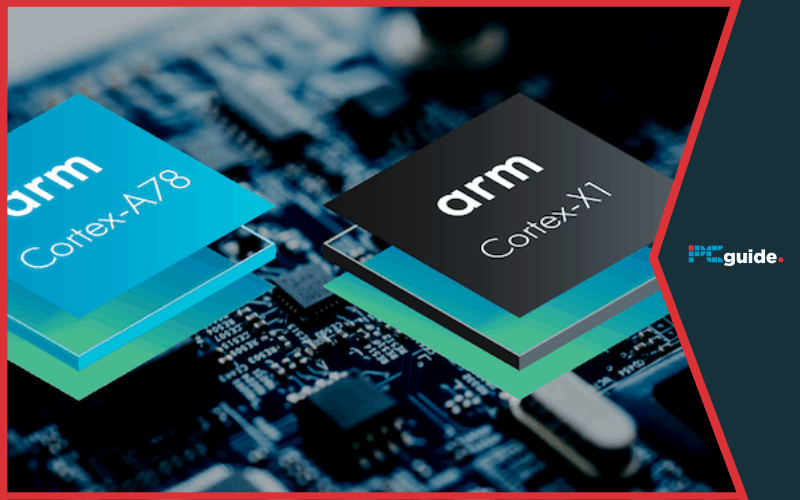Arm announce specifications for their upcoming generation of processors
Introducing the Cortex-A78, plus a host of other chips for phones, tablets, laptops and more
- Last Updated May 27, 2020

One of the world’s leading designers of CPU cores and other computer chips, Arm, has just announced its future lineup of components, which will be powering millions of computing devices around the world in the near future.
As of today, their chips designs are powering phones and tablets from the likes of Google, LG, Nokia, OnePlus, Samsung, Sony, and Xiaomi. Arm processors are also powering Chromebooks from the likes of ASUS, Acer, Lenovo & Samsung. They’ve also been making strides towards usage on Windows devices like Microsoft’s own Surface Pro X, and other Windows 10 on Arm devices from the likes of Lenovo & Samsung.
The vast majority of arm CPUs in consumer devices are currently in mobile phones, where top-end processors in many flagship Android phones are based on some combination of ARM Cortex microprocessor cores. The Cortex-A77 is their top-end microprocessor core for phones currently on the market, used in phones that feature a Snapdragon 865 CPU.

Arm has just announced the successor to the Cortex-A77, the imaginatively titled Cortex-A78. Here’s what Arm says to expect from this new chip:
“The new Arm Cortex-A78 CPU represents the very best of Arm’s drive for high-end performance at best-in-class efficiency. Cortex-A78 transforms next-generation user experiences on smartphones through double-digit improvements for sustained performance. It provides a 20 percent sustained performance improvement over Arm Cortex-A77 CPU in the same mobile thermal power envelope.
The major push on power efficiency translates into higher energy efficiency. At high-performance points, such as those that are the peak for current mobile devices, Cortex-A78 offers 50 percent energy savings over 2019 devices at the same performance as Cortex-A77.”
A nice bump in performance and power efficiency is generally to be expected with any processor generational leap, but certainly it would be nice to get CPUs powering our mobile devices that will last a lot longer without sacrificing raw performance.
Arm also hope that these new more efficient microprocessor cores will allow for innovation in mobile device design:
“We are beginning to see form factor innovation through foldable phones and multiple and larger screens. The improvements in sustainable performance are ideal for the increasing compute demands of these new smartphone device designs where SoC space could be limited.”
With Samsung, Motorola and Huawei all beginning to experiment with folding phones, Microsoft working on their dual-screen Surface Duo, and all sorts of other potential innovations in mobile computing, it’s entirely feasible that a new form factor or design that we’ve not even thought of yet could rely on smaller and more power-efficient Arm microprocessors to mold computers into new shapes that we can use in new ways.
In addition to the Cortex-A78, Arm has introduced an entirely new tier of microprocessors in their lineup. The Cortex-X1 is a larger microprocessor with greater power demands, but with massive performance gains.
This microprocessor design is perhaps more likely to be used in larger tablets like large-sized phones, tablets, and laptops or convertibles. Perhaps this could be the type of microprocessor that could help Microsoft advance their push for Windows on Arm to close the performance gap between Arm-based processors and the traditional x64 architecture most Windows operate on.
Arm says that this new microprocessor design is targeting manufacturers that want to push performance for their partners who have specific devices in mind that would benefit from increased performance:
“It is designed to bring ultimate performance for next-generation custom solutions. This is in response to partners who wanted to maximize performance in line with their own specific use-cases.”
It’s launching as part of the Cortex-X Custom Program, a new program from Arm that seeks to let device manufacturers customize the exact features and performance of the microprocessor core to suit their needs:
“The Cortex-X Custom Program allows for customization and differentiation beyond the traditional roadmap of Arm Cortex products, enabling our partners with a solution for providing the ultimate performance for specific use cases.”
Beyond these two new microprocessor cores, they’ve also got a new revision of their Mali GPU and Ethos NPU, both offering a 25% performance boost compared to their previous generation counterparts.
Arm chipsets have dominated the consumer mobile space, and it would appear that Arm is hoping to continue that into the future, and expand further out into other device classes. Perhaps these new microprocessor designs could be a step towards finding Arm-based processors in laptops or even desktops of the future.
